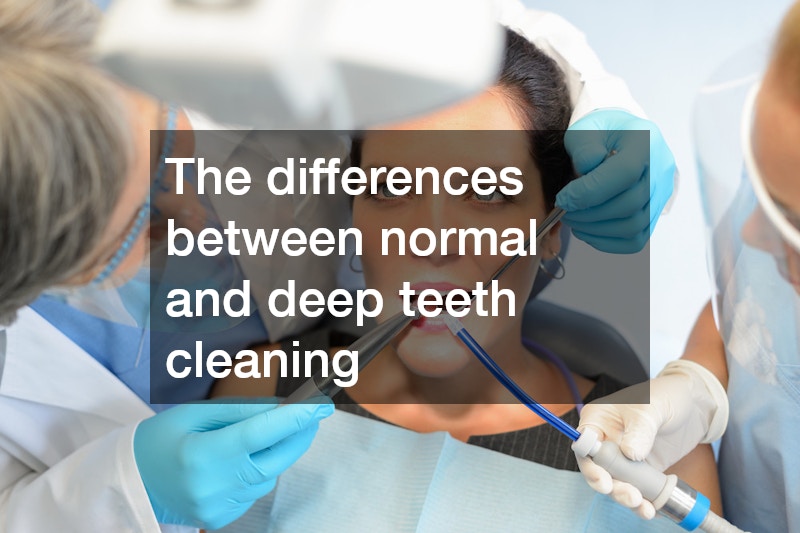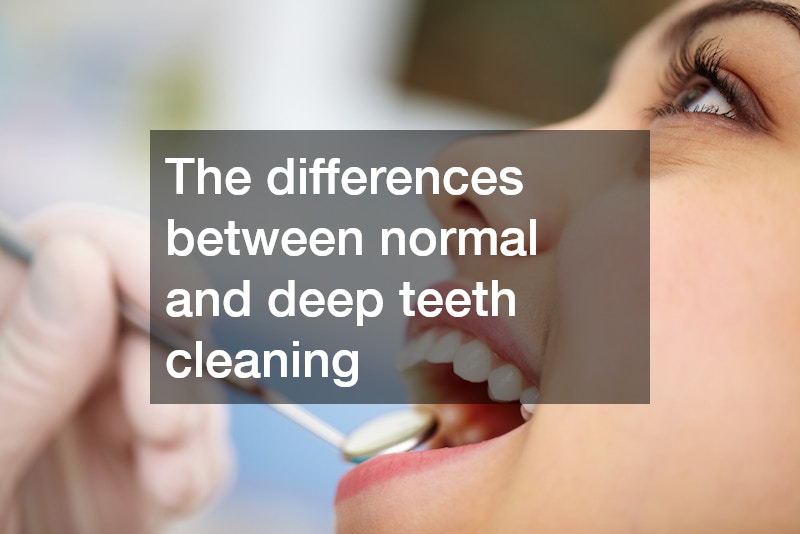The differences between normal and deep teeth cleaning

Maintaining good oral health means more than just brushing and flossing daily. Whether you’re seeing a regular dentist for a check-up or visiting a cosmetic dentist for aesthetic improvements, your cleaning routine is fundamental. Yet when your gums show signs of trouble, you may hear the term deep cleaning.
What really distinguishes a normal cleaning from a deep cleaning, and why does it matter? This article explains the key differences and when each approach is appropriate.
What Happens During a Normal Cleaning
During a standard visit to your dentist, the procedure is designed for general maintenance. The hygienist or dentist removes plaque and light tartar buildup above the gum line. After scaling, they polish your teeth and floss between all surfaces. This type of cleaning is preventive and aims to keep your gums healthy and your smile looking its best—a goal a cosmetic dentist will appreciate when enhancing your appearance.
Typically these cleanings are recommended every six months. If your gums are firm, your pockets are shallow, and you have no signs of gum disease, this routine is likely sufficient. Your dentist monitors your gum health and alerts you if more intensive care becomes necessary.
What Makes Deep Cleaning Different
When gum disease has started—evidenced by bleeding gums, deeper pockets, or loosening teeth—a deep cleaning becomes necessary. Sometimes called scaling and root planing, this type of cleaning goes beyond the visible surfaces. The dentist or periodontist cleans below the gum line, disinfects the root surfaces, and smooths the roots so the gums can reattach to the teeth.
A cosmetic dentist may refer patients for deep cleaning before proceeding with aesthetic treatments. That’s because healthy gum support and stable bone are prerequisites for veneers, crowns, or smile makeovers. If your dentist warns you that a deep cleaning is needed, it’s a serious signal—not simply a more intensive polish.
Primary Differences Between Normal and Deep Cleaning
1. Depth of Cleaning
A standard visit addresses only above-the-gum debris and surface polishing. A deep cleaning extends below the gum line, cleaning root surfaces and removing bacterial toxins. The dentist performing this cares for both disease management and preparing conditions for long-term health.
2. Treatment Purpose
Normal cleanings are preventive; they maintain gum health and protect against cavities. Deep cleanings are therapeutic—they treat existing gum disease and reduce the risk of further bone loss. A cosmetic dentist interested in long-term aesthetics supports deep cleaning when alignment and appearance are at stake.
3. Recovery Time and Visits
Normal cleaning typically causes minimal discomfort and allows you to resume regular activities immediately. Deep cleaning may require local anesthesia, multiple sessions, and post-treatment instructions like gentle brushing and avoiding snacks. Your dentist will outline what to expect.
4. Cost and Insurance Coverage
Routine cleanings are often covered by preventive dental plans; deep cleanings may fall under periodontal treatment with varied coverage. Before starting, check with your dentist about costs and insurance policies. A cosmetic dentist refining the final aesthetic will want the health phase resolved before proceeding.
5. Long-Term Outcomes
With a normal cleaning, the goal is to keep gums healthy and avoid escalation. With a deep cleaning, the goal is to halt disease progression, reduce pocket depth, and enable further restorative or cosmetic work. Your dentist monitors healing and may schedule more frequent follow-ups.
When to Ask Your Dentist for Deep Cleaning
You should consider deep cleaning if you notice signs like persistent bleeding gums, bad breath that doesn’t improve, pockets deeper than 4 mm, or changes in tooth position. A cosmetic dentist will often insist that gum disease be treated first so that cosmetic results last. Before any major smile makeover, your dentist wants a healthy foundation.
How a Cosmetic Dentist Uses the Cleanup Phase
If you’re seeking aesthetic treatment—whitening, veneers, or aligners—a cosmetic dentist will partner with your dentist to ensure periodontal health. Clean, aligned teeth look better when gums are healthy and stable. In such cases, the deep cleaning done by the dentist is part of the overall plan, enabling the cosmetic dentist to deliver optimal results without risking failures due to underlying disease.
Your dentist’s job is to stabilize the gums and bones; the cosmetic dentist’s job is to enhance appearance. Together, they ensure functionality and aesthetics work in harmony.
Aftercare: Supporting Your Dentist’s Work
Regardless of cleaning type, your commitment matters. Brush twice a day, floss daily, attend follow-ups as your dentist recommends, and avoid tobacco and excessive sugar. If you’ve had deep cleaning, special rinses, soft brushing and short-term dietary adjustments may be advised. Your cosmetic dentist will rely on your gum health staying on track.
Conclusion
The difference between a normal cleaning and a deep cleaning is far more than procedural intensity—it’s about treatment purpose, depth, cost, and long-term outcome. While a regular dentist focuses on maintaining your oral health, a cosmetic dentist focuses on your smile’s appearance—and both rely on healthy gums and bone. If you’ve been told you need a deep cleaning, consider it a necessary step toward both oral health and aesthetic success.






